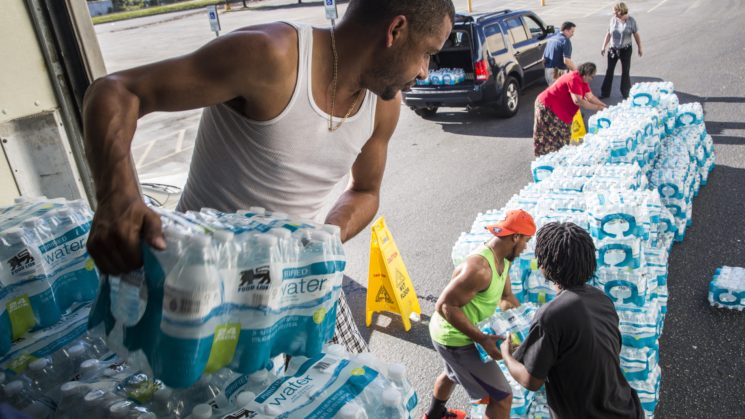
When preparing for hurricanes, we must use resources wisely. You can help your neighborhood and community by coordinating resources and organizing to help one another.
Plan to be self sufficient for at least 72 hours after the storm passes. Rural areas may not be accessible for a week or more.
If local authorities have ordered you to evacuate, you should do so.
But what happens once you get home? And what if you were asked to take shelter in place? What do you do when the storm passes?
In the aftermath of Hurricane Matthew in Hatteras Village, neighbors helped neighbors to clean up, document damage for insurance claims, and rebuild. The result? A more resilient community. Businesses were able to return to operation much sooner than in many inland locations and neighbors helping neighbors helped to meet unmet needs when resources were scarce.
Even if your neighborhood did not organize in advance of a disaster, you can still coordinate resources to meet identified needs. This helps your local emergency management authorities also identify who needs what, faster. To get started, confirm the following:
Designate a Neighborhood Gathering Site.
This should be somewhere visible and accessible. If possible, select somewhere covered in case of rain. It is best if the location has limited or no steps, so that those who are elderly or have access issues can enter easily. Use this Neighborhood Gathering Site to keep master lists of your Neighborhood Disaster Resource Inventory and, if possible, written documentation of emergency information like locations of feeding stations or shelters. You can also gather and store supplies that your neighbors agree to share. Finally, it gives emergency managers and local first responders a designated place to go to communicate with you.
Use the Neighborhood Disaster Resource Inventory Questions and then document resources and needs with the Neighborhood Disaster Resource Inventory Table and the Neighborhood Disaster Needs Table as you survey your neighborhood. Versions of both Neighborhood Disaster Tables in PDF and/or the Neighborhood Disaster Resource Inventory Questions in PDF also are available.
These materials are adapted from several sources in places that experienced past disasters (Volunteer Center of Marin, C.A.; Harris County, T.X., and Hatteras Island, N.C.). If your neighborhood is large, designate several captains and assign streets. Remember, some people may not want to provide their information, so please be respectful of their privacy! But remain open to being a resource.
If your neighbor consents to provide resources, record the information for future recall. Use the resource types in the checklist to help you inventory your neighborhood. For example, if you ask about supplies, read through the list and write down that your neighbor is willing to let you use her chainsaw, generator, etc.
Keep the master list of resources with a designated Neighborhood Lead and a Secondary Lead, and make sure that everyone in the neighborhood knows how to contact the Lead. When the Lead is unavailable, ensure the Secondary Lead is on standby. Neighbors who have needs can contact the Lead, who will match them with what is available or communicate the needs when you make contact with emergency management. This way, you can maintain the privacy of those who have volunteered their time or resources.
Materials compiled and adapted by Jessica Whitehead, former coastal communities hazards adaptation specialist for North Carolina Sea Grant. Lead photo: community recovery after Hurricane Matthew, by Travis Long/The News and Observer.